How to replace a snowblower spark plug
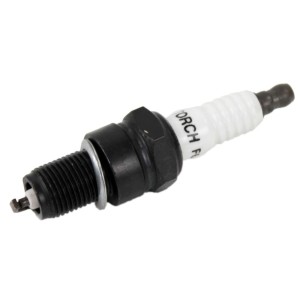
The snowblower spark plug creates the spark that ignites the fuel to start engine. If deposits build up on the spark plug electrode or if the ceramic insulation cracks, the spark plug won't create the spark. Fortunately, replacing a spark plug is an easy and inexpensive fix. This step-by-step snowblower repair guide shows how to install and gap a new spark plug using the manufacturer-approved snowblower part.
If the spark plug fouls quickly after you replace it, then engine problems could be apparent.
You’ll typically see either carbon deposits or oil deposits fouling the spark plug. The type of spark plug fouling often points to engine problems that you can resolve to prevent frequently having to replace the spark plug in your snowblower.
Carbon spark plug deposits
Carbon spark plug deposits are typically caused by:
Rich fuel mixture from a faulty carburetor.
Ignition system timing problems.
Faulty ignition system.
Prolonged idling.
Using the wrong spark plug.
Resolve these types of issues to prevent excessive carbon deposits on the spark plug.
Oil spark plug deposits
Oil deposits on the spark plug can be caused by overfilling the engine with oil or worn piston rings.
Check these issues when you see oil deposits on the spark plug.
Find additional tips for checking the snowblower spark plug in our How to check and replace a snowblower spark plug article/video.
Use these easy DIY instructions to replace the spark plug in Craftsman, Husqvarna, MTD, Murray, Honda, Toro, Yard-Man and Ariens snowblowers.
Instructions
- 01.
Remove the spark plug
Disconnect the spark plug wire. Use a deep socket and a ratchet to remove the spark plug from the cylinder.
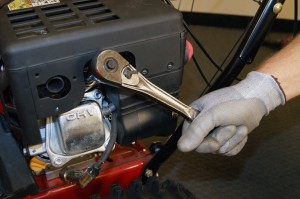
PHOTO: Remove the spark plug.
- 02.
Gap the new spark plug
Check your owner’s manual for the correct gap setting. Insert the gap gauge between the electrodes on the spark plug. The gap gauge should fit snuggly between the electrodes; when you pull it out, you should feel only slight resistance. If the gap is too wide, lightly tap the electrode on a clean, hard surface or use a small hammer. If the gap is too small, use the bender on the gap gauge to widen it.
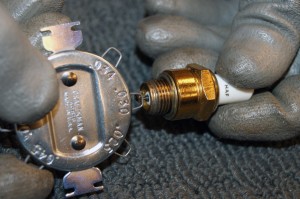
PHOTO: Gap the spark plug.
- 03.
Install the plug
Thread the spark plug into the cylinder. Hand-tighten the spark plug until it’s snug and then use the ratchet and deep socket to tighten the spark plug another ¼ to ½ turn. Don’t overtighten, because the steel base of the spark plug can strip the softer aluminum threads on the cylinder head.
Reconnect the spark plug wire.
Symptoms for gas snowblowers
Choose a symptom to see related snowblower repairs.
Main causes: punctured tire, damaged rim…
Main causes: dirty carburetor, stale fuel…
Main causes: dirty carburetor, clogged fuel filter, dirty spark plug, incorrect valve lash, leaky engine gaskets…
Main causes: stale gas, clogged carburetor, clogged or broken fuel line, dirty spark plug, bad rewind starter, incorrect…
Main causes: snow build-up in chute, chute drive mechanism failure, bad chute control assembly…
Main causes: loose drive clutch cable, damaged drive clutch cable, worn friction disc, scraper blade scraping the ground…
Main causes: clogged chute, damaged auger blades, broken shear pins, worn auger belt, damaged gear case, engine problems…
Main causes: broken shear pins, worn or loose auger drive belt, auger drive cable failure, damaged auger, bad gear case…
Things to do: replace the spark plug, change the oil, rebuild the carburetor, adjust valve lash, adjust or replace the b…
Repair guides for gas snowblowers
These step-by-step repair guides will help you safely fix what’s broken on your snowblower.

How to replace a snowblower fuel filter
Replace the fuel filter on your snowblower if it's clogged or damaged.…
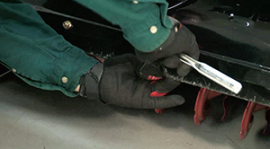
How to replace a snowblower shave plate
Follow the 7 easy steps in this repair guide/video to replace a worn out shave plate on your snowblower.…
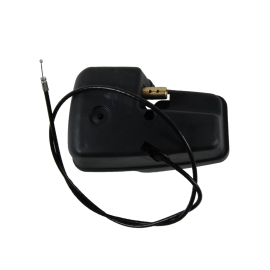
How to replace a snowblower chute control gearbox assembly
Replace the chute control gearbox on your snowblower if it's stripped or damaged.…
Effective articles & videos to help repair your snowblowers
Use the advice and tips in these articles and videos to get the most out of your snowblower.
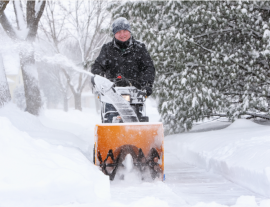
Learn the steps to take to adjust and maintain your snowblower so it lasts longer.…
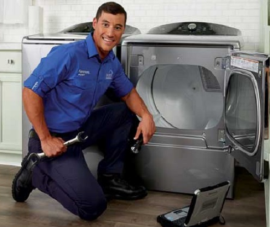
Learn about Sears Technical Institute and the advanced technical content being developed for aspiring appliance techs.…
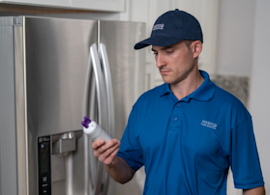
Get answers to frequently asked questions about Sears and Sears PartsDirect.…